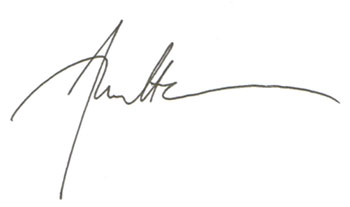Newsletter July 2011: Crab stitchNews:As you might suspect, I love shawls and make them all year long. But summer seems to be an especially good time of year to make and wear shawls. A great reason to add two new shawl patterns to the shop!First, EclatDuSoleil’s shawl collection Summer Breeze. Three variations on a triangular shawl theme, all worked in laceweight linen or laceweight bamboo. In the picture, you can see the green shawlette. There is also a yellow shawlette and a big blue shawl. With a 3.5 mm (US E-4) hook and laceweight yarn, this is a perfect summer project.More information in the shop!Also, my own latest design: a crochet stole named Nejlika.
Three variations on a triangular shawl theme, all worked in laceweight linen or laceweight bamboo. In the picture, you can see the green shawlette. There is also a yellow shawlette and a big blue shawl. With a 3.5 mm (US E-4) hook and laceweight yarn, this is a perfect summer project.More information in the shop!Also, my own latest design: a crochet stole named Nejlika. In this stole, three different stitch patterns composed by shells and flowers float into one another. You start working at the center of the stole and make one half and then the other.Nejlika is crocheted in laceweight bamboo with a 3 mm (US C-2 or D-3) hook. More information in the shop!I still need your opinion!
In this stole, three different stitch patterns composed by shells and flowers float into one another. You start working at the center of the stole and make one half and then the other.Nejlika is crocheted in laceweight bamboo with a 3 mm (US C-2 or D-3) hook. More information in the shop!I still need your opinion!
If you didn’t have the time to answer the survey on online crochet classes last month, or if you are a new subscriber, it’s not too late to weigh in. Online survey here.Thank you for your help!Crab stitch:If you are a seasoned crocheter, chances are that you don’t need a tutorial on crab stitch. However, this is a stitch that often stumps people who haven’t done it before. Also, classics are classics for good reason, and it’s always good to get back to them. The short version is that crab stitch is single crochet worked from left to right (i. e. in reverse compared to the usual direction). It is usually worked as an edging, for a finishing touch. Crab stitch works equally well to finish a crocheted or knitted project. I often see knitted garments that could benefit from a row of crab stitch around the neckline or at the hem.When I first tried crab stitch, I couldn’t figure out how to hold and turn my hook. Often, you ask yourself too many questions before working this stitch. Here is how easy it is.If you are adding crab stitch to a straight piece, before any seaming, finish with a right side row and chain 1 to give some space for the first stitch in the crab stitch row. Do not turn work.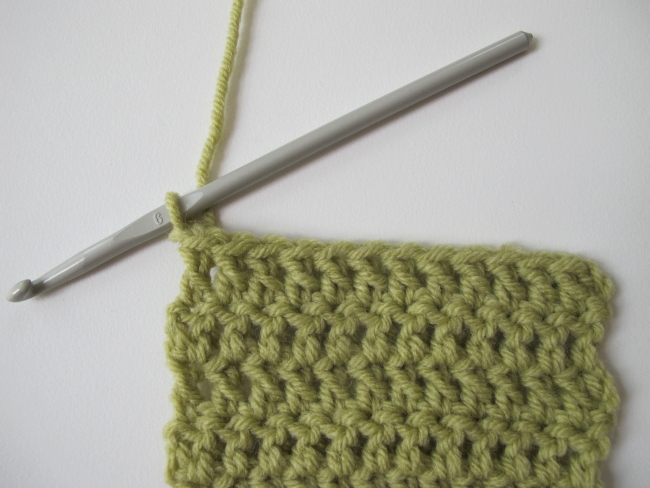 Keeping the tip of your hook pointing to the left (just as you do when you crochet in the usual direction) and your yarn behind the work, turn the tip of the hook down to work into the last stitch you made in the previous row.
Keeping the tip of your hook pointing to the left (just as you do when you crochet in the usual direction) and your yarn behind the work, turn the tip of the hook down to work into the last stitch you made in the previous row. 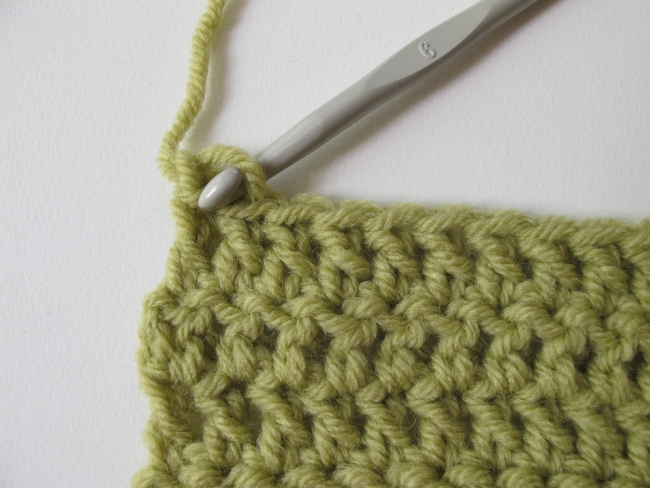 Yarn over and pull through as for any single crochet.
Yarn over and pull through as for any single crochet.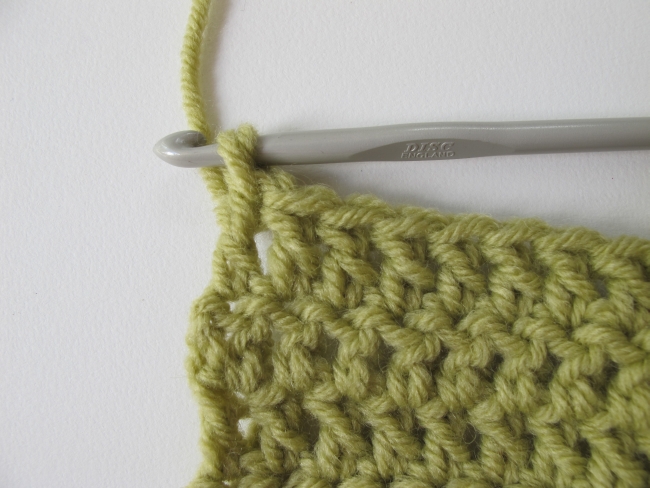 Finish the sc as you would any other sc. The next stitch will be placed in the stitch the arrow points to.
Finish the sc as you would any other sc. The next stitch will be placed in the stitch the arrow points to. 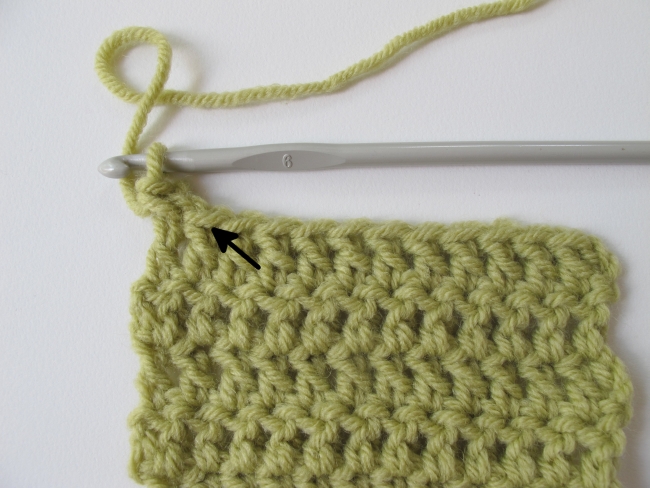 When you start making the second stitch, the first one will bend over. Don’t worry about this, it is just as it should be. Keep your hook pointed to the left and the yarn at the back of the work.
When you start making the second stitch, the first one will bend over. Don’t worry about this, it is just as it should be. Keep your hook pointed to the left and the yarn at the back of the work.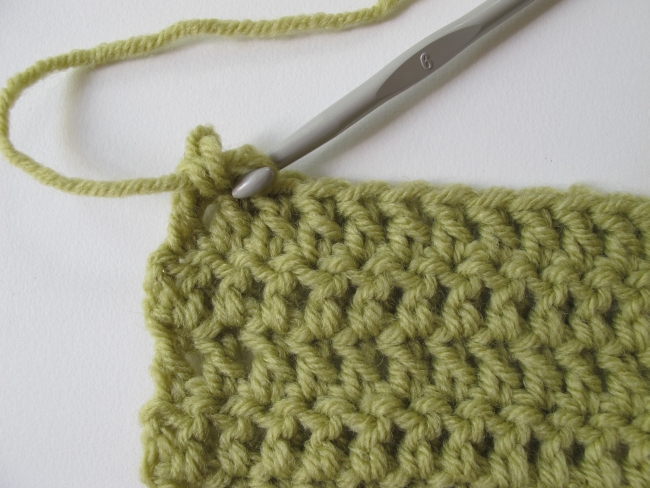 Work the second stitch as you would any old sc. It doesn’t look like much yet, but continue working stitch by stitch, going « backwards ».
Work the second stitch as you would any old sc. It doesn’t look like much yet, but continue working stitch by stitch, going « backwards ».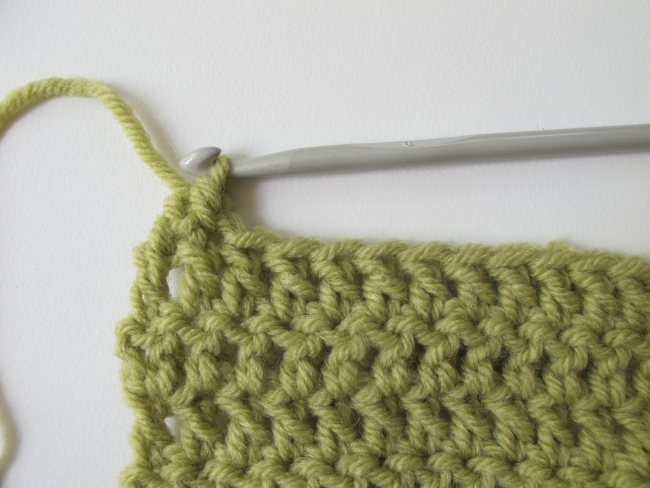 Here is the finished edging. Working consistently in a fluid way gives a more consistent edging (to the right); stopping and checking almost always results in a more irregular one (to the left). It gets better with practice. Minor irregularities may jump out when you’re looking closely at the work just done, but tend to seem less important once you’ve finished and the project is in use.
Here is the finished edging. Working consistently in a fluid way gives a more consistent edging (to the right); stopping and checking almost always results in a more irregular one (to the left). It gets better with practice. Minor irregularities may jump out when you’re looking closely at the work just done, but tend to seem less important once you’ve finished and the project is in use.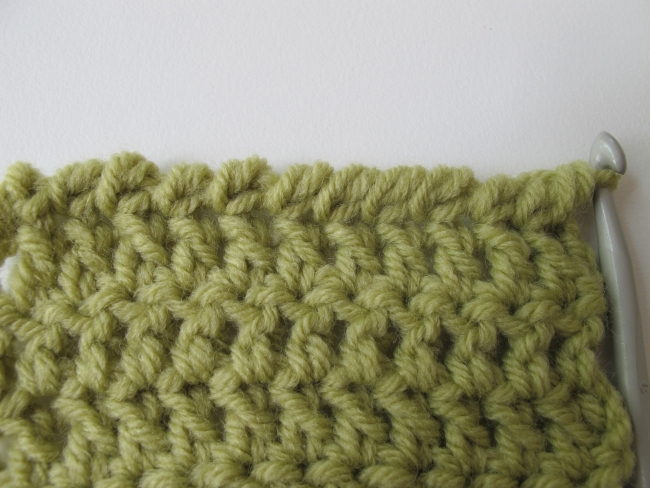 You can get a nice effect working the crab stitch edging in a contrasting colour. Here, I fastened off the main colour and attached the contrasting one directly with a sc in the last stitch of the previous row.
You can get a nice effect working the crab stitch edging in a contrasting colour. Here, I fastened off the main colour and attached the contrasting one directly with a sc in the last stitch of the previous row. 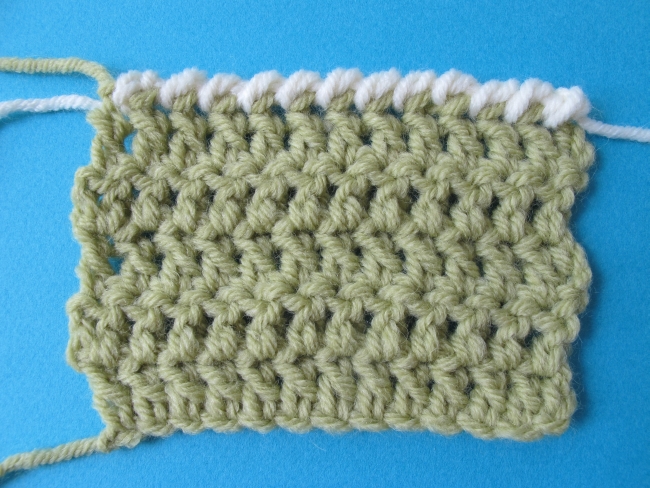 I’m sure there are many other ways to use crab stitch. This is what I came up with as a start: I worked a swatch in sc through the front loop only, and then added crab stitch ridges in a contrasting colour, working the crab stitch through the unworked loops visible on the surface of the fabric.
I’m sure there are many other ways to use crab stitch. This is what I came up with as a start: I worked a swatch in sc through the front loop only, and then added crab stitch ridges in a contrasting colour, working the crab stitch through the unworked loops visible on the surface of the fabric.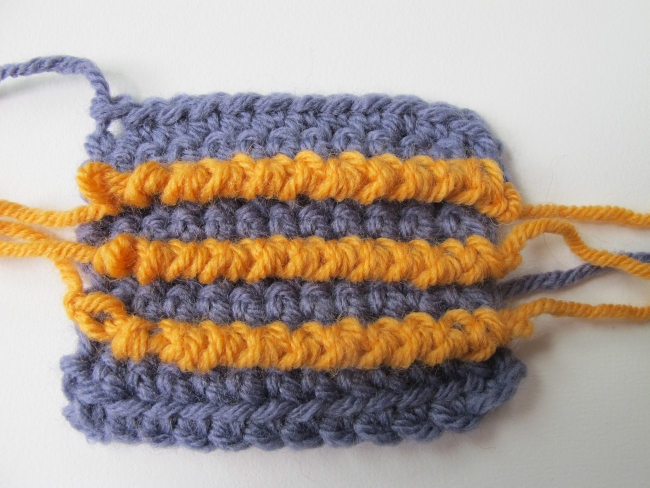 Let me know if you find other fun ways to use crab stitch!See you soon!
Let me know if you find other fun ways to use crab stitch!See you soon!